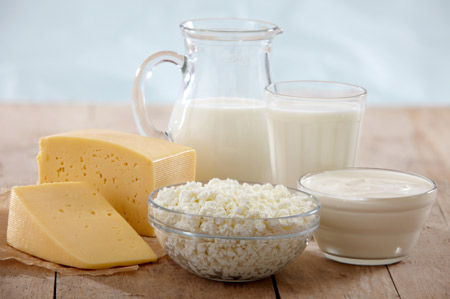 (Businessweek) – House Agriculture Committee Chairman Frank Lucas and Senate Agriculture Committee Chairman Debbie Stabenow are backing a short-term extension of a farm law that lapsed Sept. 30 as the Obama administration warns that without congressional action, retail milk prices could almost double.
(Businessweek) – House Agriculture Committee Chairman Frank Lucas and Senate Agriculture Committee Chairman Debbie Stabenow are backing a short-term extension of a farm law that lapsed Sept. 30 as the Obama administration warns that without congressional action, retail milk prices could almost double.
“I would hope that as soon as is humanly possible, a decision will be made to allow us to take action” on the extension, Lucas told reporters off the House floor. “We need to take positive action, put this issue to rest, and make sure that it is clear to everybody in this country that the farm bill policy has certainty and that we will not have $8 or $9 milk.”
The draft bill would extend current law, along with disaster aid for producers affected by this year’s U.S. drought and changes to current milk policy, through Sept. 30. It would reduce mandatory outlays by $30 million through fiscal 2022, according to the Congressional Budget Office. The bulk of the spending would come in the first year, and as such it would actually increase spending by an estimated $555 million through fiscal 2017.
Other Bills
The proposal is one of three farm-related draft bills released over the weekend in the House of Representatives; all of them would stave off the potential jump in consumer milk prices should government commodity programs begin to lapse tomorrow.
The second measure would extend most of the current law through Jan. 31, and the third would protect only against possible dairy-price spikes. Those two are opposed by House and Senate Democratic agriculture leaders. Representative Collin Peterson of Minnesota, the top Democrat on the House Agriculture Committee, called a 30-day extension a “poor joke on farmers that offers no certainty.”
The most recent farm law, enacted in 2008, expired after attempts to pass a new five-year proposal failed. Without that plan, agricultural programs automatically return to rules passed in 1949, the basis of all subsequent legislation.
The effects of that transition have been delayed because of the growing seasons of different crops. Dairy production, a year-round business, is the first major commodity affected. In November, the U.S. Department of Agriculture put the price of a gallon of fresh whole milk at just under $3.54.
‘Parity’ Price
Under President Harry S. Truman’s farm policy, the government bought supplies of a product until its price reached “parity” with the cost immediately before World War I. Adjusted for a century of inflation, the Agriculture Department’s milk-support price today would be $39.08 per hundred pounds, more than double the dairy futures price in Chicago on Dec. 28.
Under the revised dairy plan, written by Peterson, the government would manage the milk supply by setting milk- production limits for farmers who enroll in a market- stabilization program. The proposal eliminates programs that pay farmers when prices fall below a certain level, replacing them with initiatives designed to protect profit margins through insurance programs and by limiting output, which would raise prices.
Milk Oversupply
Oversupply of milk that drives down prices has been a perpetual difficulty for dairy producers. The National Milk Producers Federation, an organization of farmers and dairy cooperatives, has supported the plan, while the International Dairy Foods Association, which represents milk processors such as Dallas-based Dean Foods Co. (DF), has opposed it for potentially driving up the cost of their raw materials.
The market-stabilization plan was included in both the Senate’s 10-year, $1 trillion version of the farm bill it passed in June and a bill approved in July by the House Agriculture Committee but not taken up by the full chamber. It wasn’t in the 2008 farm law, which the one-year draft legislation would extend — adding the new dairy program. House Speaker John Boehner, an Ohio Republican, has called the current dairy program “Soviet- style” management of the farm economy that the Peterson plan would worsen.
Milk-Price ‘Ripple’
Agriculture Secretary Tom Vilsack yesterday warned that without a new farm bill, consumers will pay the price.
“Consumers, when they go in the grocery store, are going to be a bit shocked when instead of seeing $3.60 for milk, they see $7 a gallon for milk,” he said on CNN’s “State of the Union” program. “That’s going to ripple throughout all of the commodities if this thing goes on for an extended period of time.”
Lawmakers are considering a farm package as part of a resolution to the larger budget dispute involving more than $600 billion in tax increases and spending cuts set to take effect Jan. 1.
Several Republicans in the House said that if an agreement is reached to deal with the larger tax and spending issues, the Senate could attach a one-year extension of the law, which funds food aid to poor families as well as subsidies to growers of corn, cotton and other crops.
“We’re mostly waiting for the Senate to see what they put together,” said Cathy McMorris Rodgers of Washington state, the fourth-ranking Republican in the House.
“If the leadership were waiting until the last minute,” said Senator Pat Roberts of Kansas, the top Republican on the Senate Agriculture Committee, “we’re sure as hell there.”
To contact the reporters on this story: Alan Bjerga in Washington at abjerga@bloomberg.net; Derek Wallbank in Washington at dwallbank@bloomberg.net
To contact the editors responsible for this story: Katherine Rizzo at krizzo5@bloomberg.net; Jon Morgan at jmorgan97@bloomberg.net




